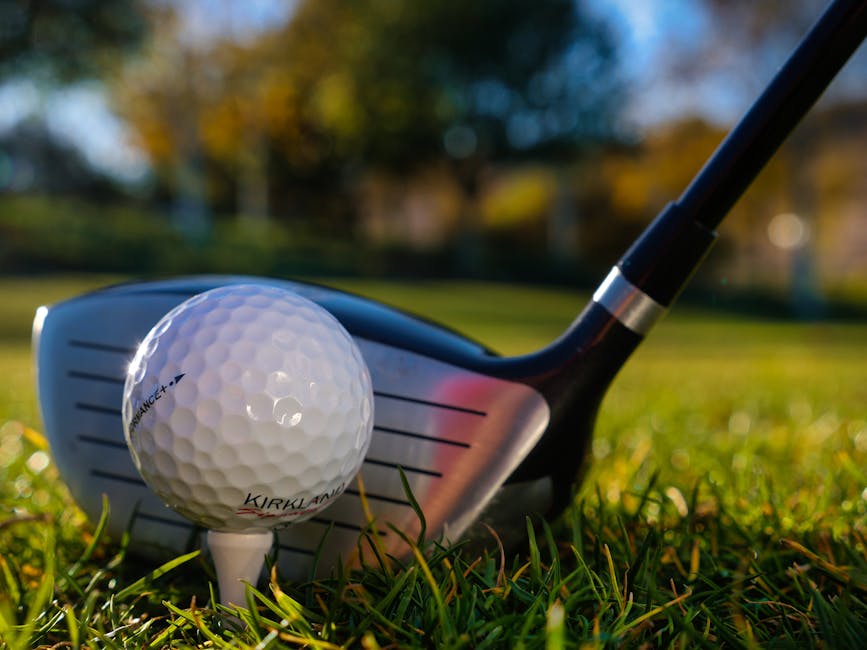Unlocking Efficiency: Learn the Correct Way to Hold a Golf Club
Introduction
Golf is a sport that combines skill, precision, and a touch of class. Whether you’re a beginner or an avid golfer, mastering how to hold a golf club is fundamental to improving your game. This guide will walk you through the correct techniques, ensuring maximum efficiency and performance. We’ll cover grip styles, common mistakes, and FAQs, all structured to enhance your learning experience.
H2: Importance of Proper Grip in Golf
Before diving into techniques, it’s crucial to understand why a proper grip is so important. The grip is your only connection to the club, influencing swing mechanics and the flight of the ball. A correct grip enhances control, reduces the chance of injuries, and increases the consistency of your shots. By mastering this skill, you optimize your chances for success on the course.
H2: Types of Golf Grips
H3: The Interlocking Grip
Favored by professionals like Tiger Woods and Jack Nicklaus, the interlocking grip involves intertwining the pinkie finger of your trailing hand with the index finger of your leading hand. This grip is ideal for players with smaller hands as it ensures a tight, solid connection between the hands and the club.
H3: The Overlapping Grip
Also known as the Vardon grip, this technique is popular among experienced players. It involves placing the pinkie finger of your trailing hand between the index and middle finger of the leading hand. This grip is suitable for golfers with larger hands and provides a good balance between control and comfort.
H3: The Baseball Grip
As the name suggests, this grip is akin to holding a baseball bat. The fingers of both hands connect directly around the club without overlapping. It is particularly good for beginners, children, or those with joint pain, as it allows for a more natural and relaxed hold.
H2: Step-by-Step Guide to the Correct Golf Grip
H3: Positioning Your Hands
- Start by holding the club at a 45-degree angle and facing the grooves directly ahead.
- Place your lead hand (left hand for right-handed players) near the end of the grip, ensuring it is straight from the wrist to the forearm.
- Wrap your fingers around the grip, finishing with the thumb slightly to the right of the center.
H3: Placing the Trailing Hand
- Integrate your trailing hand as per your chosen grip style (interlocking, overlapping, or baseball).
- Make sure the thumb of the leading hand fits in the lifeline of the trailing hand.
- Adjust both hands until you see two or three knuckles of your lead hand when you look down.
H3: Checkpoints for a Solid Grip
- Grip Pressure: Keep a moderate grip pressure. Over-gripping can tense your muscles and affect swing mechanics.
- Hand Alignment: Ensure your hands work as a unit. The V formed by the thumb and forefinger of each hand should point towards your trailing shoulder.
- Clubface Control: Always align your grip with the clubface. Misalignment here can lead to inconsistent shots.
H2: Common Golf Grip Mistakes to Avoid
H3: Over-Gripping
Holding the club too tightly can restrict your swing and reduce the power of your shots. Aim for a firm yet gentle hold.
H3: Misaligned Hands
Misalignment can cause the ball to veer off course. Make sure the V’s created by your thumbs and forefingers point towards your shoulder.
H3: Inconsistent Grip
Changing your grip from shot to shot adds unpredictability to your play. Develop a consistent grip that feels comfortable and stick with it for every shot.
H2: Frequently Asked Questions About Holding a Golf Club
Q1: How often should I adjust my grip on the club?
A: Generally, you should set your grip at the beginning and maintain it throughout your session. Regularly re-check to ensure it has not shifted, especially after a challenging shot.
Q2: What is the best grip for a beginner?
A: Many instructors recommend starting with the baseball grip as it is the most natural. As you gain more experience, you can try different grips.
Q3: Can the grip affect the curvature of the ball?
A: Absolutely. An incorrect grip can lead to unwanted spins and curves. A proper, aligned grip promotes straighter shots.
Q4: Is there a difference in gripping for different clubs?
A: While the basic principles remain the same, subtle adjustments might be necessary, particularly between irons and drivers due to different swing mechanics.
Conclusion
Mastering the correct way to hold a golf club is pivotal in unlocking playing efficiency and effectiveness on the course. Whether you prefer the interlocking, overlapping, or baseball grip, what matters most is consistency and comfort. Remember, practice makes perfect. Spend time practicing your grip as much as you practice your swing. By following these tips and integrating the correct techniques, you’ll see a notable improvement in your game. Happy golfing!
